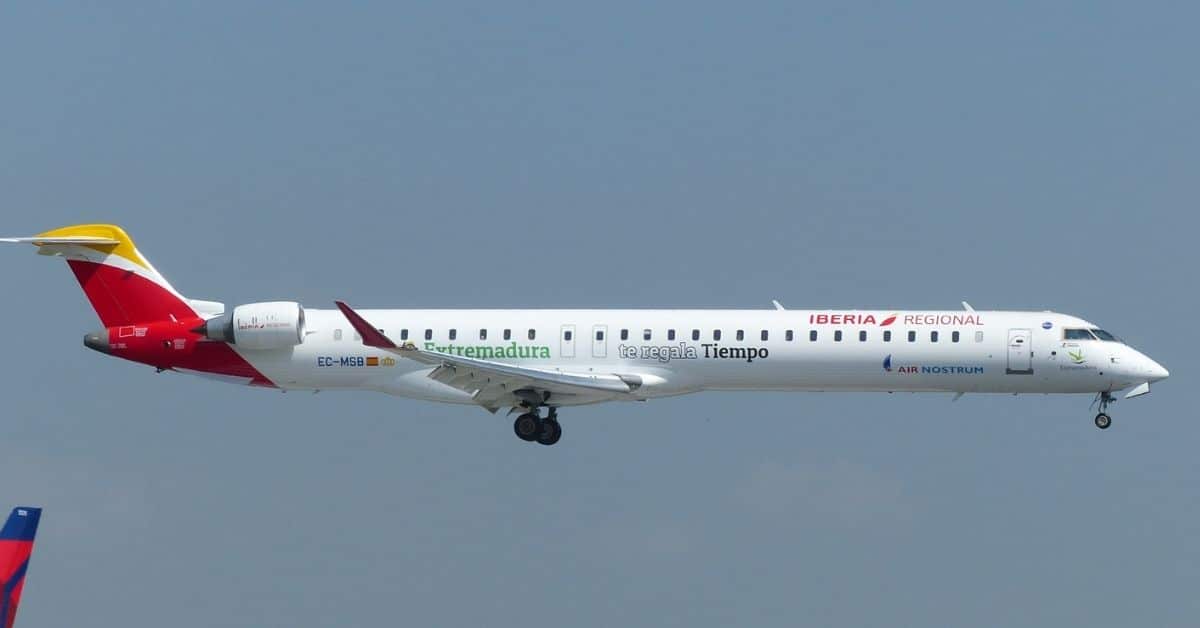The genesis of the regional jet market on a large scale dates back to the early 1990s. The most common player in this market is the Bombardier CRJ series of regional jets.
Up until the end of the production run of the CRJ series in 2020, more than 1900 airframes across the range were produced.
The range includes the -100,-200,-700,-900, and -1000 variants, with differing performance specifications and passenger capacities.
Why Does the CRJ Series Not Have Autothrottle?
From a cockpit perspective, the type is noticeable for being an aircraft that lacks an autothrottle system.
The primary reason for there being a lack of autothrottle system on the type is due to the low operating cost model of regional jets.
Coupled with the short-range operations which regional airlines tend to serve, there was deemed to be no great operational advantage for the CRJ to require an autothrottle.
During the late 1980s, regional airlines were seeking fuel-efficient replacements for aging turboprops. Regional airlines expressed a need for jet aircraft for short-haul commuter routes that could provide cruise speed performance comparable to larger jet aircraft.
In order to minimize costs, the autothrottle system was left out by Bombardier’s design department.
With regional airline profit margins being very thin, the maintenance costs associated with an autothrottle system were not economically feasible.
Being a passenger development from the existing Challenger business jet range, the CRJ series was launched in 1991 with the -100/200 series being the first variant.
Despite there being no autothrottle on the CRJ models by default, there is a customer option to have the system installed. This customer option is costly and as a result, it is rare. This customer option was made available for only the -200 series.
CRJ FADEC System
Despite the lack of an autothrottle system on the CRJ series (excluding the -200 variant), the type does have a full FADEC (Full Authority Digital Engine Control) system on its 2x GE CF34 engines.
Does the CRJ have Vnav?
The CRJ series has a VNAV function installed as part of the Automatic Flight Control System (AFCS). This system incorporates full vertical guidance in relation to the altitude and speed targets set on the Flightplan (FPL) section of the Flight Management System (FMS).
The speed settings for achieving desired altitude and speed targets respectively require manual power adjustments via the throttle levers.
Aside from standard power adjustments throughout various phases of flight, the continuous manual power adjustments required can add to the flight crew’s workload during the descent phase of flight.
The manual operation of the throttle system increases planning and calculations required regarding energy/power management.
This is also a heavy workload factor encountered during the cruise phase of flight, in which power adjustments are required to maintain a safe cruise speed – a balance between flying below the critical mach number and above the stall speed.
At higher altitudes, this margin is greatly reduced, which requires a high degree of precise and regular power adjustments. In unfavorable weather conditions, this can be extremely challenging to counteract.
On longer flights, this process can increase flight crew fatigue levels.
CRJ SPD Mode
As part of the AFCS mode on the CRJ series, there is a SPD (Speed) mode available. This mode works similarly to the Flight Level Change (FLCH) mode commonly found on larger commercial aircraft, in which the desired speed can be reached via pitch changes made. This mode is often used in the climb phase of flight.
Autothrottle Options on Other Regional Jets
The lack of autothrottle on the CRJ series is not unique to the type. The Embraer ERJ family of regional jets also does not have autothrottle systems installed. Again, the predominant reason behind this is cost-driven; additional equipment means additional maintenance is required. With regional jets being designed for short-haul, commuter operations, it is simply an unnecessary extra cost.
Read More:
Can Planes Land in Zero Visibility? | Aircraft Autoland
This is an updated article. Originally posted on January 11, 2022 @ 12:31 pm

After visiting more than 60 countries, I have probably been on every type of plane there is and visited countless airports. I did my very first international solo trip to South Africa at the age of only 16 and haven’t really stopped traveling since.
Despite the adventurous travel itch, I do have a nerdy side as well – which is satisfied by writing about all things aviation “too boring” for my regular travel blog.
